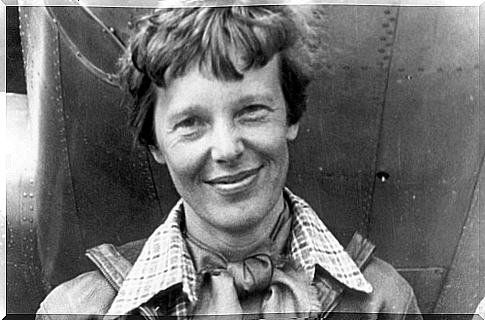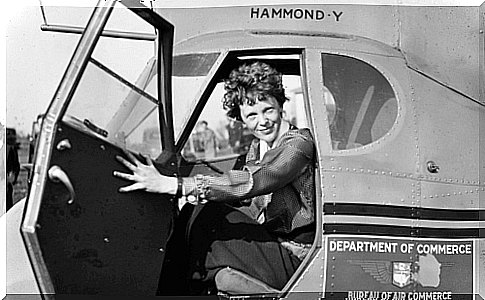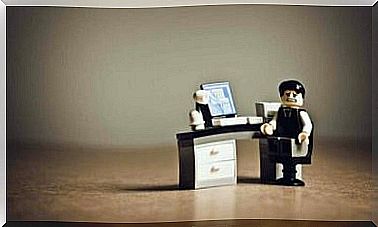Amelia Earhart: Symbol Of Feminism

Much has been written about Amelia Earhart and her mysterious disappearance. Years and years of trying to explain what happened when his plane disappeared into thin air. From time to time, new evidence seems to emerge that strengthens some theories over others.
But the truth is that the most interesting thing about this historical figure was not his death or disappearance, but his life. Amelia Earhart, a pioneer in the world of aviation and a social symbol, has had an important influence on the lives of many men and women.
He is one of those icons that, time after time, remind us that psychological and social barriers and gender discrimination are overcome by doing what we have been told we cannot do.
This young nurse fell in love with aviation, a professional field that was reserved for men at the time. Women couldn’t even dream of becoming pilots.
The early years
She was born in Kansas, United States, in July 1897. Raised by her grandparents, little Amelia displayed a restless personality from an early age. Her childhood was marked by numerous transfers and an alcoholic father that her mother would eventually abandon.
He completed his studies at Columbia and Harvard University. With the outbreak of World War I, she and her sister would go to Canada, Toronto, as volunteer nurses to care for pilots injured in combat. It seems that just then the idea of becoming an airplane pilot began to develop.
Shortly after the war ended, and after a visit to an air show in which she stepped on a plane for a short flight, Amelia Earhart made a decision that would change everything: learning to fly.
His first flight instructor was a woman, another pioneer. In 1923 she obtained a pilot’s license, becoming the sixteenth woman to obtain it. Amelia Earhart thus became one of the first women to break the gender stereotypes of the society of her time.
The racing career
In the following years Amelia Earhart devoted herself not only to flying, but also to promoting the new world of aviation and building its infrastructure. National newspapers were beginning to recognize her as one of the most eminent pilots in the country, above many men.
In 1928 Amelia became the first woman, along with two other pilots, to cross the Atlantic, as Charles Lindbergh had previously done. And so, the determined Amelia Earhart took off, along with two other pilots, from Nova Scotia to Europe on the Friendship .
It was June 18, 1928 when Amelia and her team reached South Wales, where the press was eagerly awaiting her.
From that moment she began to be known as Lady Lindy. Her fame grew and Amelia wrote books and gave numerous lectures encouraging women to become pilots.
He managed to make several flights to the United States. In 1931 she married George Palmer Putman, a famous explorer and editor. From then on, he would also participate in the creation of one of the first airlines in history.
Amelia Earhart’s crossing of the Atlantic
Amelia Earhart’s journey across the Atlantic was actually piloted by a team she was part of. But the idea of making the trip alone was beginning to emerge among her desires.
On May 20, 1932, on her Lockheed Vega , Amelia crossed the Atlantic alone, becoming the first woman to complete this journey and the second person to successfully complete it.
At this point in her life, Amelia Earhart was considered a national idol and a symbol for the feminist movement. In 1937 he decided to travel around the world along the equator.
When the voyage was about to end successfully, in one of the last sections, her plane disappeared with her and her co-pilot. His remains were never found and so began the tragic legend, full of speculations and mysteries.

The wings of Amelia Earhart
Amelia Earhart broke the established rules about the professions that women and men could and could not play. In fact, at that time, society had drawn a line that defined which professions were appropriate for men and which were appropriate for women.
Although his life story is, in many cases, quite idealized, the truth is that he had to face the most ingrained clichés of his time.
In addition to her training as an aviator, she also had to overcome mental limits, for herself and for others, and it was only thanks to great determination that she became an aviation pilot. One of the many stereotypes that social psychology has been studying for years.
The stigma in aviation is still quite widespread, not only for the pilots, but also for the cabin crew. Until recently, the word “stuart” did not even exist and the term “stewardess” was only allowed to designate female crew members. For much of aviation history, men could fly a plane and women could only be flight attendants.
Without going any further, in 2016, a commercial flight piloted by two women that made the Miami – Buenos Aires crossing was the subject of controversy. A group of passengers delayed the flight for more than an hour and a half because they didn’t want two women driving without any male supervision.
Conclusions
Women have been flying commercial and military aircraft for a century now: the first pilot license to a woman was granted on March 8, 1910. As has happened for many other professions, the road was not easy, the stereotypes were there and still are today, but luckily we made it.
We sincerely hope that controversies such as the one in which passengers refused to fly without male pilots in command are only isolated cases resulting from ignorance.
It seems that women are somehow forced to remind everyone over and over again of the deeds and achievements of their ancestors. In this way, perhaps one day, our society will stop questioning talent or professionalism in relation to gender.









